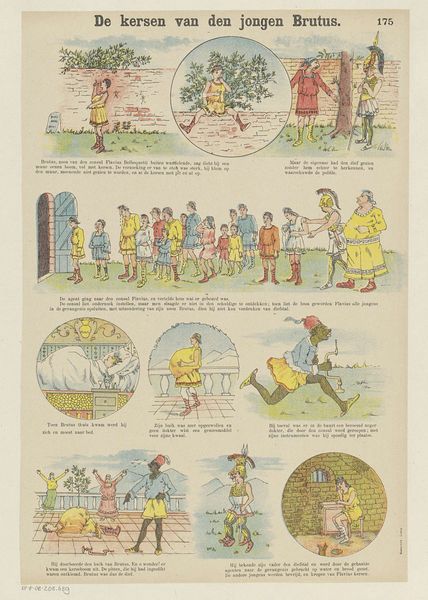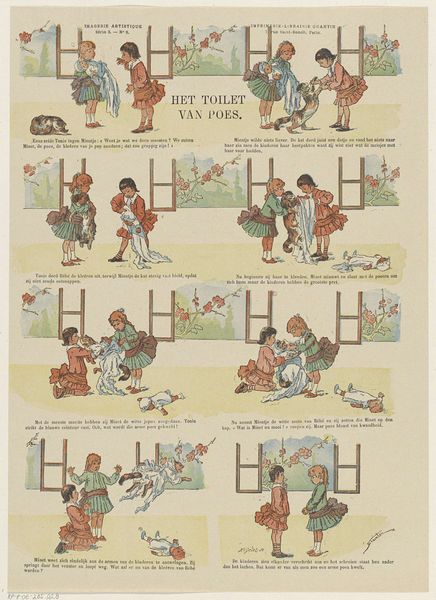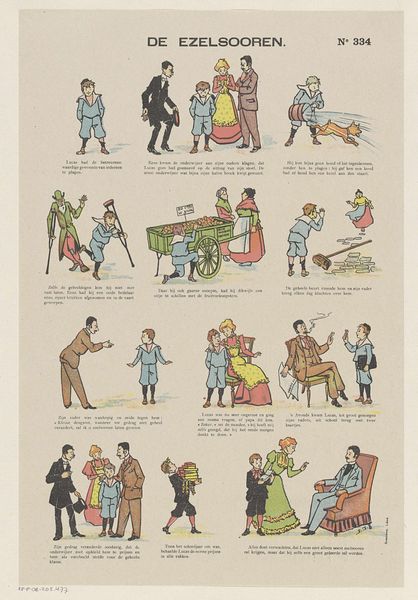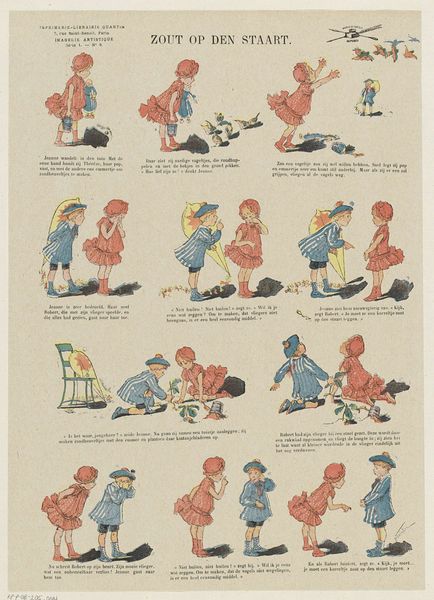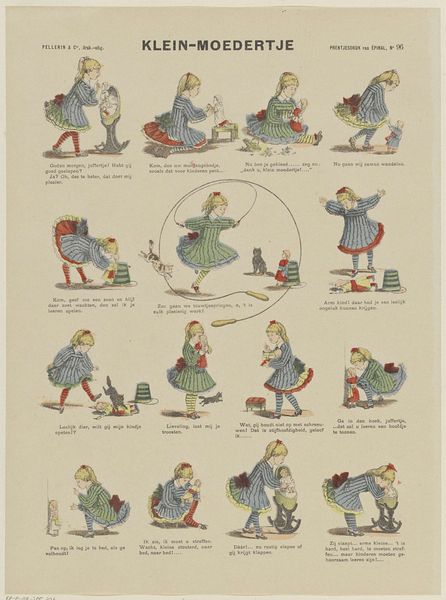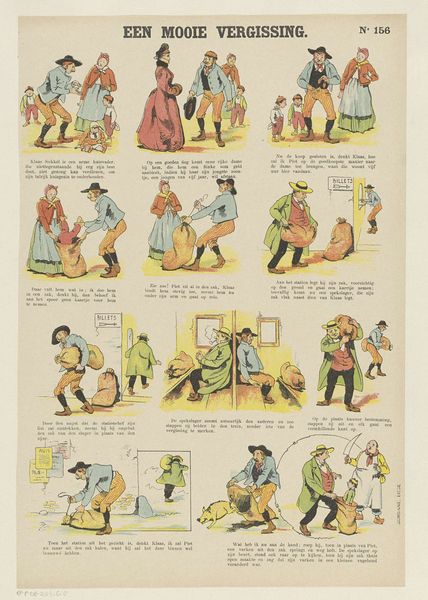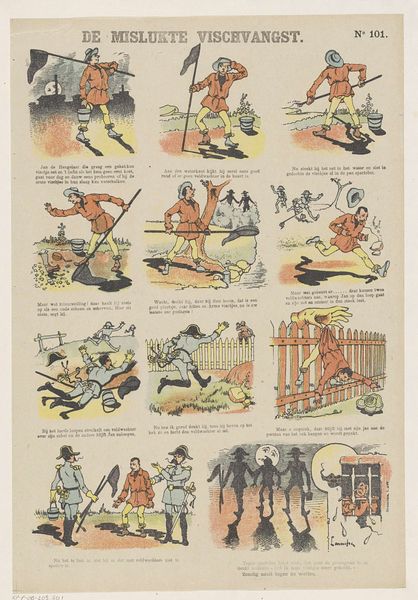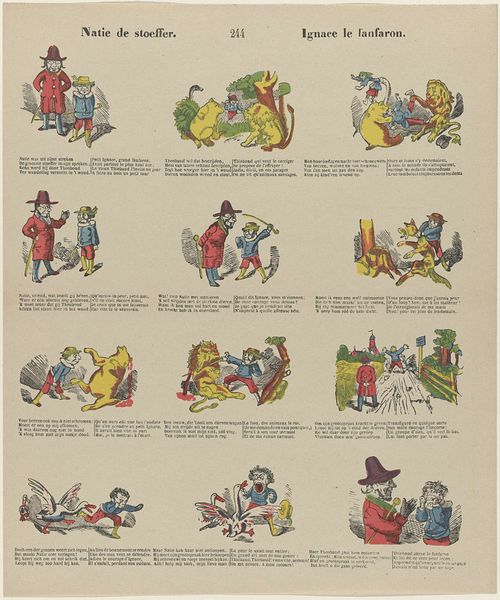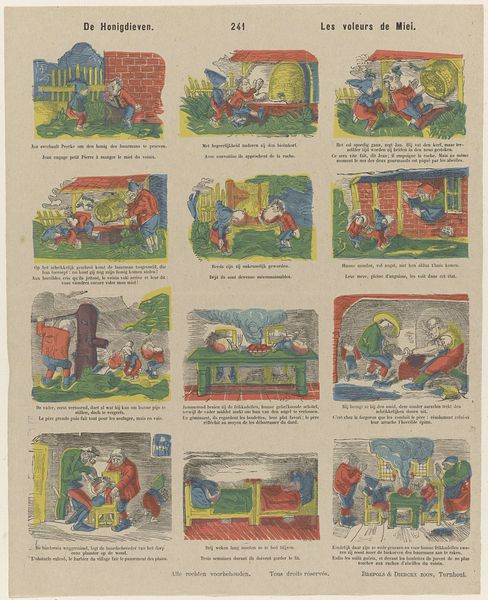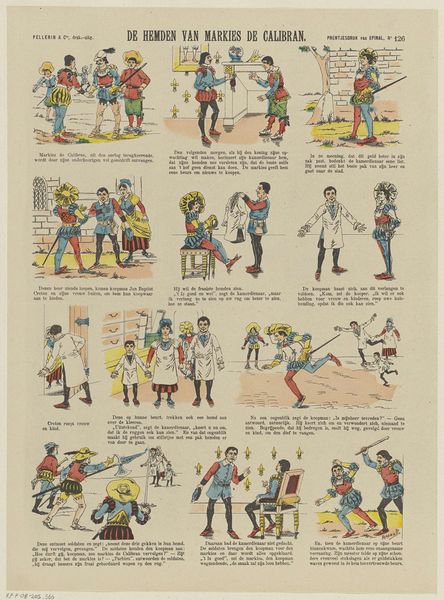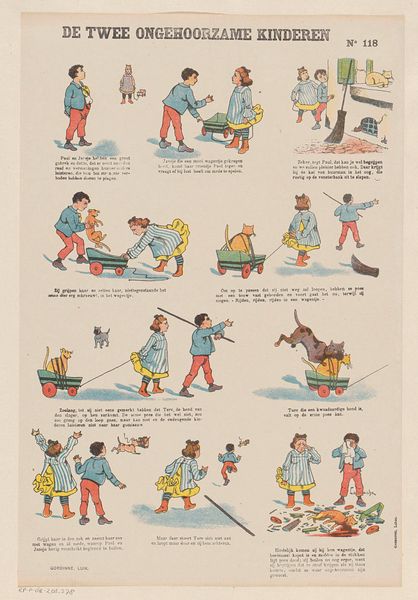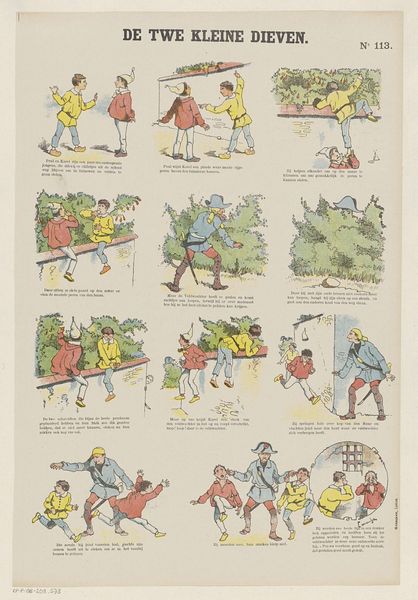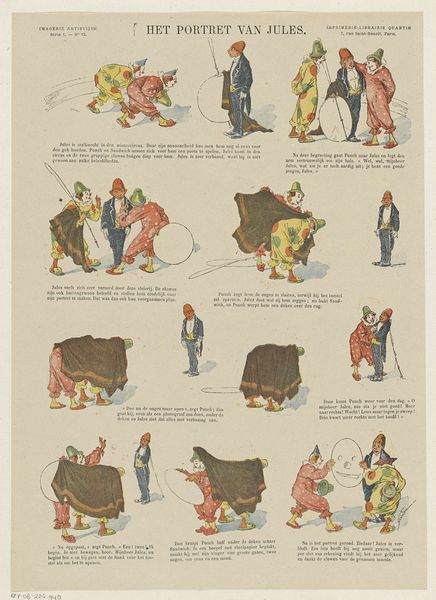
print, paper
# print
#
caricature
#
paper
#
comic
#
genre-painting
#
cartoon theme
Dimensions: height 368 mm, width 265 mm
Copyright: Rijks Museum: Open Domain
Curator: Here we have Felix Lacaille's "De mislukte reis," or "The Failed Journey," created sometime between 1876 and 1890. It's a printed work on paper, with a distinctly cartoonish aesthetic. What stands out to you at first glance? Editor: There’s something whimsical yet unsettling about it. The figures seem almost puppet-like, trapped within these sequential scenes. It reminds me a little of those early silent film narratives. Curator: Exactly! Lacaille presents us with a series of panels depicting a boy and a girl, ostensibly on some kind of outing. We can trace the narrative through its formal construction – consider the repeated forms of the children, their simplified clothing and their shared light palette. Editor: I'm immediately drawn to the visual storytelling itself. The balloons serve as both props and symbols. It speaks to the carefree naivety of children perhaps, set against the realities of the adult world, or some other impeding structure or set of values? Curator: An interesting point! Let’s think about the basket, functioning formally as both a container and, eventually, a conveyance, underscoring that transition through changing values, with the work becoming much darker by the final sequence. Editor: And the shift in tone is quite evident as the "journey" progresses, marked by increasing chaos, which seems more aligned with the political climate of its time—growing anxieties, rapid industrialization, an increasingly mechanized world perhaps impacting these supposedly naive individuals as the mood descends. Curator: It becomes clear that what started as a lighthearted adventure culminates in…well, disaster, visually depicted in the increasingly disrupted picture frames in the later images, and mirroring the era's sociopolitical discord, yes? The balloon gradually darkens, and our travelers fail. Editor: It suggests, to me, a world on the brink. What initially seems innocent becomes something far more loaded when read through that lens of social disruption. A failed journey, indeed. Curator: So while Lacaille's visual framework might present a sequence of failure, there's a broader narrative—a comment on our changing cultural context through form and arrangement. Editor: Absolutely, I now find the aesthetic choice fascinating, as I initially read that the artist's whimsical figures became symbolic of historical instability.
Comments
No comments
Be the first to comment and join the conversation on the ultimate creative platform.
